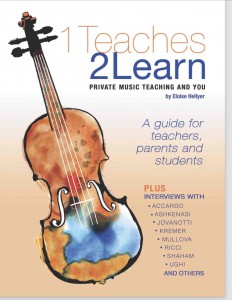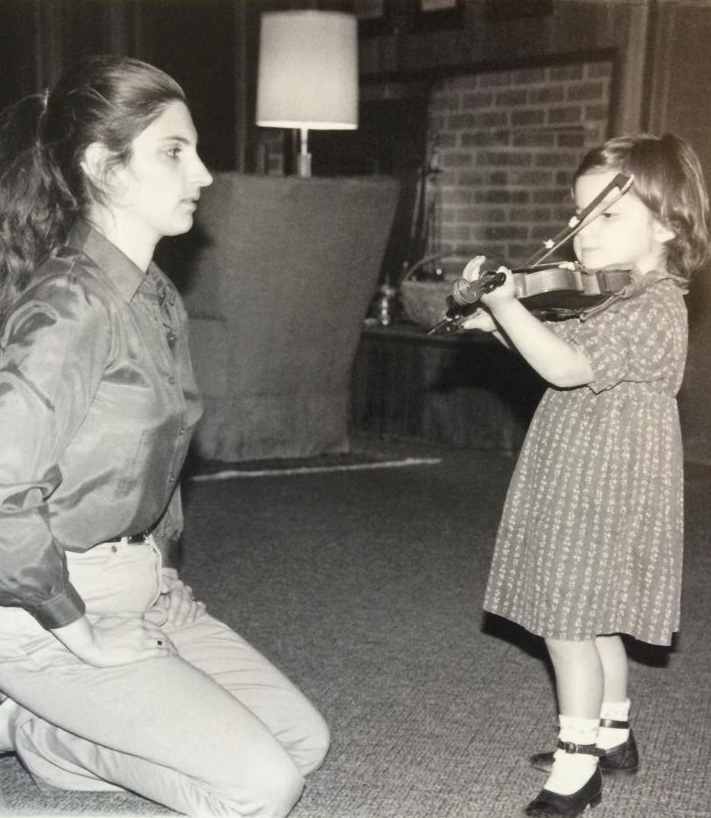Anger. A User’s Guide
Do you ever have students who just can’t get a good, intense sound? I have had many of them. Some don’t like a big sound, others don’t seem to have the energy, still others seem to think they are playing only for themselves. I have noticed that what they all have in common is NOT lack of physical energy or talent, but that they deny their emotions, in particular anger. Why anger? Because they are so young they have probably not known many other strong emotions and because in our society, anger is viewed as a negative, something to be avoided or to be controlled if aroused. Is it possible that there is only a negative aspect to it? There must be some evolutionary advantage to anger, otherwise why would all humans experience it?
Anger is an emotion that summons up the energy needed to solve a problem – or get into trouble, depending on how that energy is used. We teachers can help our students use this emotion to find and direct this energy in order to play better.
Energy, lots of it, is needed to make a beautiful, full sound. When I have students who don’t seem to be able to produce such a sound, it is usually because they are not feeling their own energy or are blocking it. The easiest way to help them find this energy, I have found, is via their own emotions. Anger is a ready source of energy, but can our students tap into this source without actually becoming angry? Of course they can. They don’t have to get angry, they have only to remember the physical feeling anger gives them. Given that playing the violin (or any instrument) should teach them to manage and direct their energy, teachers must prompt students to acknowledge their emotions, anger in particular, because doing so will help them access the energy needed to make a strong and expressive sound..
When I have students who produce a tiny sound, I ask them, after trying everything else, “Do you ever get angry?” The answer is almost always, “No.” I find this interesting – I have had students as young as four or five years old who are already denying their emotions. I can hear it in their playing: very little sound and a lack of expression. So I start a quiz; “You never get angry?” “No,” they say. “Not at your sisters and brothers?” “No.” “Your father?” “No.” “Your schoolmates?” “No.” “How about your mother?” At that point they usually break down and admit they get mad at their mothers. I then ask them to describe to me how they feel in their bodies when they get angry. They usually reply, “Angry,” which is a description of their mental state. I ask them again to separate what they are thinking from what they are feeling physically and the answer (which I sometimes have to coax out of them) is usually “really strong – so strong I could push down a wall.” “Ah,”: I reply, “what you are feeling is energy! The energy you are feeling is not positive or negative – what you DO with that energy is, however. If you use it to take your violin and bash it over someone’s head, that is negative. If you use that energy to produce a beautiful sound, then that is positive. The trick is to separate the physical feeling from what you are thinking, remember the energy you feel and use it when you need it without having to relive the anger. Now,” I say, “remember that anger energy and use it to make a really big sound.” They try it and out comes a big fat tone from their violins.
I am sure there are lots of fine musicians with wonderful tone out there who will tell me that they never lose their tempers and are in perfect emotional equilibrium. Good. Some of them are also enormous talents that may not have needed much instruction in these things as they intuitively knew them. However, many music students, even talented ones, may have trouble producing a good sound and need a different type of instruction from, “Do it this way, it sounds better.” We may have to try a more personal approach so that our students can understand that making music is more than just moving our fingers. The best way is to talk about the subject they can most easily relate to – themselves, their problems and their emotions.
Some students are convinced that anger is something that should never be experienced, that good people never get angry. Or they are afraid of what may happen if they allow themselves to feel angry. We teachers must help them understand that anger and other strong emotions are part of being human, that their feelings can be useful to them as musicians, that they can transform their negative emotions into something positive and that this transformation is not only good for them but for anyone who listens to them (or even just casually hears them play). Their violin playing will improve as a result.
End of Part 1. Next anger as a practice tool.
Share this:
Buy it on www.sharmusic.com - eBook format, avaliable worldwide, paperback in North America
COPYRIGHT
ABOUT
A music teacher’s thoughts and observations on the teaching and the study of a musical instrument, hoping to be of help to parents, students and teachers.
PHOTO
AWARDED TOP 25 VIOLIN BLOG
CATEGORIES
TAGS
ARCHIVES
-
Agosto 2022
Agosto 2023
Agosto 2024
April 2015
April 2016
April 2017
April 2019
April 2020
Aprile 2022
Aprile 2023
Aprile 2024
August 2014
August 2015
August 2016
August 2017
August 2018
August 2019
August 2021
December 2014
December 2015
December 2016
December 2017
December 2018
December 2019
December 2020
Dicembre 2022
Dicembre 2023
Dicembre 2024
Febbraio 2022
Febbraio 2023
Febbraio 2024
February 2015
February 2016
February 2018
February 2019
February 2020
February 2021
Gennaio 2022
Gennaio 2023
Gennaio 2024
Giugno 2022
Giugno 2022
Giugno 2023
Giugno 2024
January 2015
January 2016
January 2017
January 2018
January 2019
January 2020
July 2015
July 2017
July 2019
June 2016
June 2017
June 2018
June 2019
June 2020
June 2021
Luglio 2022
Luglio 2023
Luglio 2024
Maggio 2022
Maggio 2023
Maggio 2024
March 2015
March 2016
March 2017
March 2018
March 2019
March 2020
March 2021
Marzo 2022
Marzo 2023
Marzo 2024
May 2015
May 2016
May 2018
May 2019
May 2020
November 2014
November 2015
November 2016
November 2017
November 2018
November 2019
November 2021
Novembre 2022
Novembre 2023
Novembre 2024
October 2014
October 2015
October 2017
October 2018
October 2019
October 2020
October 2021
Ottobre 2022
Ottobre 2023
Ottobre 2024
September 2014
September 2015
September 2016
September 2018
September 2019
September 2020
September 2021
Settembre 2022
Settembre 2023
Settembre 2024
RECENT POSTS
Terry G and Me, or Terry Gilliam on Where (or What) Practicing the Piano Will Get You…
The Teaching We Don’t Do Is More Important Than We Think
Overwhelmingness or What Teaching and Motherhood* Have in Common
Cellphone Serenity
How to Build Your Reputation – the Kind You Want
Desperate Times, Desperate Measures. Or How to Deal With Your Strong-Willed Stubborn Student and Survive
“Why Does My Teacher Get So Frustrated?” Letter to a Perplexed Student
Mount Rush-no-more….And How to Get There
Realizzato con VelociBuilder - Another Project By: Marketing:Start! - Privacy Policy




